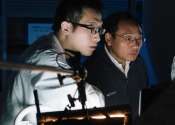Power generation achieved by a self-assembled biofuel cell
Researchers have developed the first fully functional biofuel cell whose biocatalysts (enzymes that play a critical role in power generation) directly self-assemble onto the electrodes. In about 5 minutes, enzyme-nanoparticle ...









